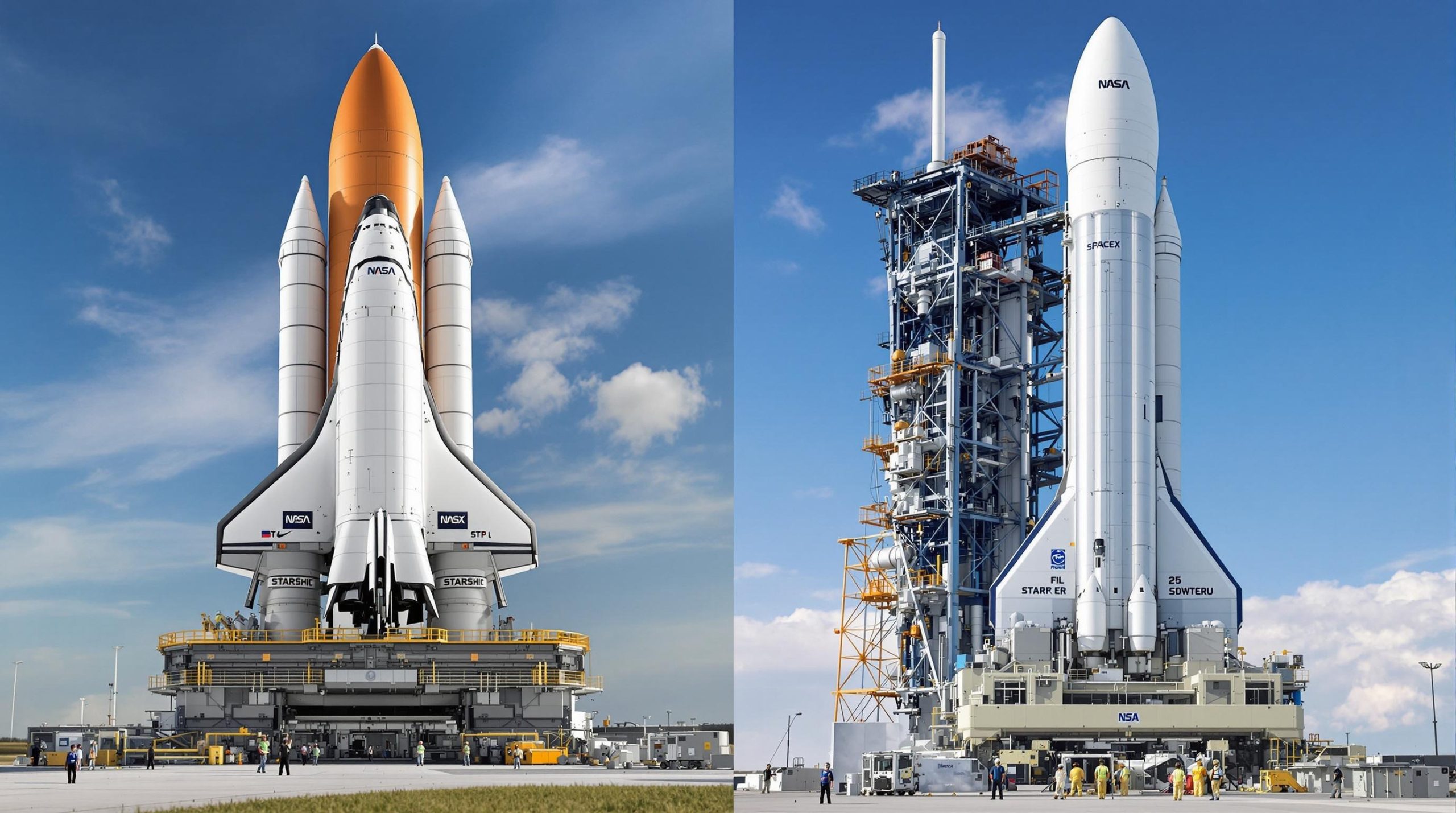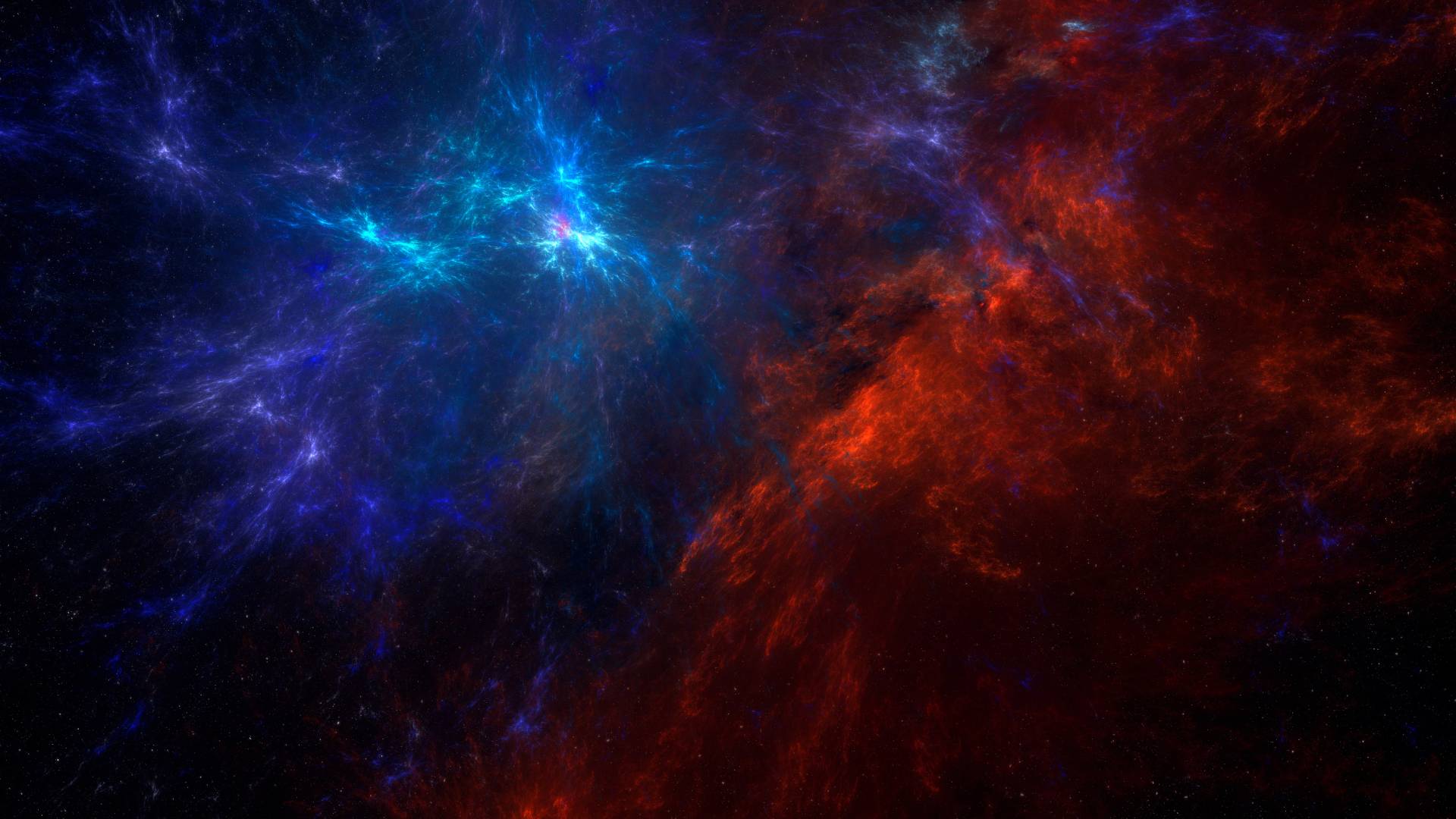Space Shuttle vs Starship which one really you think ? Humanity’s journey beyond Earth has always relied on technological marvels, and two of the most iconic spacecraft in history are NASA’s Space Shuttle and SpaceX’s Starship. The Space Shuttle was a pioneering reusable spacecraft that enabled human spaceflight for over three decades, while Starship represents a bold vision for the future of interplanetary travel. stay with Spaceyv
But how do they compare? What made the Space Shuttle revolutionary in its time, and does Starship truly represent the next step in space travel? In this article, we’ll explore their designs, capabilities, and potential impact on the future of space exploration.
1. Overview: The Space Shuttle vs Starship
| Feature | Space Shuttle | Starship |
|---|---|---|
| Developer | NASA | SpaceX |
| First Flight | 1981 | 2023 (test flights) |
| Last Flight | 2011 | Ongoing development |
| Reusability | Partial (orbiter reused, boosters lost) | Fully reusable |
| Crew Capacity | Up to 8 astronauts | ~100 astronauts (planned) |
| Payload Capacity | ~27,500 kg (Low Earth Orbit) | ~150,000 kg (Low Earth Orbit) |
| Primary Goal | Earth orbit missions, space station support | Deep space missions, Mars colonization |
| Launch System | Two solid rocket boosters + external fuel tank | Super Heavy booster + Starship second stage |
2. The Space Shuttle: A Pioneering Reusable Spacecraft
Design and Mission
The Space Shuttle was NASA’s first partially reusable spaceplane, designed to launch like a rocket and land like an airplane. It consisted of three major components:
- Orbiter (where the crew and payload were housed)
- External Fuel Tank (provided fuel for launch, discarded after use)
- Solid Rocket Boosters (provided additional thrust, partially reusable)
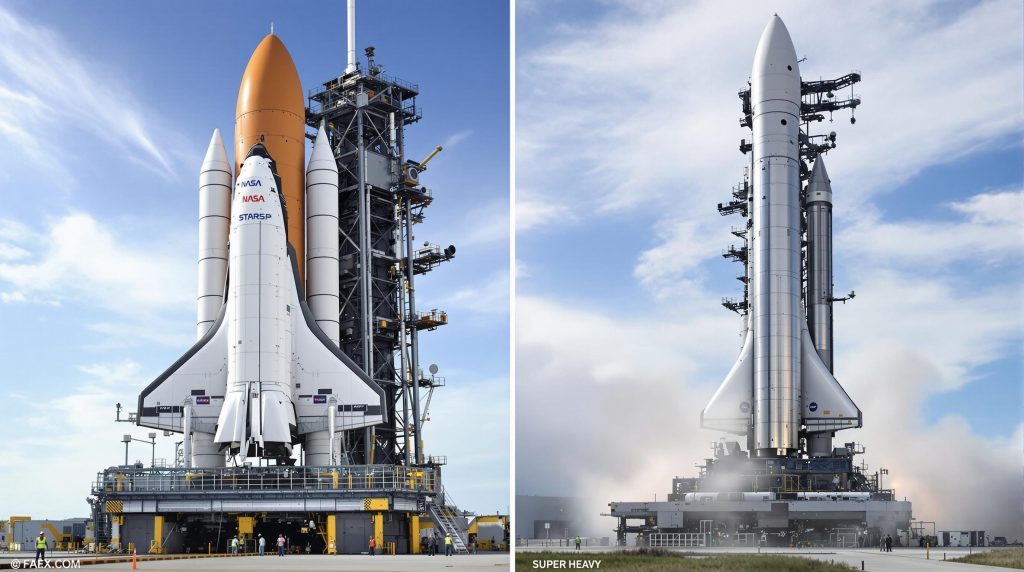
Achievements of the Space Shuttle
- Construction of the International Space Station (ISS): The Shuttle played a key role in assembling and supplying the ISS.
- Hubble Space Telescope Deployment & Repair: It enabled scientists to maintain and upgrade the Hubble telescope.
- Reusable Spacecraft: Unlike previous expendable rockets, the Shuttle could be reused, reducing launch costs over time.
Challenges and Risks
- High Costs: Each Shuttle launch cost an estimated $450 million, making it far more expensive than initially planned.
- Tragic Disasters: The Challenger (1986) and Columbia (2003) disasters highlighted safety concerns, ultimately leading to the program’s retirement in 2011.
- Limited Destinations: The Shuttle was designed for low Earth orbit (LEO) missions and was not capable of deep-space travel.
You can also read more : What Is the Fermi Paradox? Where are the aliens?
3. Starship: The Future of Interplanetary Travel?
Design and Vision
Starship is SpaceX’s next-generation spacecraft, designed to be a fully reusable rocket system. It consists of:
- Super Heavy Booster – The first-stage rocket that provides liftoff thrust.
- Starship Upper Stage – The spacecraft that carries cargo and crew.
Unlike the Space Shuttle, Starship is designed for deep space travel, including missions to Mars, the Moon, and beyond.
Advantages of Starship
- Full Reusability: Every part of the system is designed to be reused, potentially reducing launch costs to $10 million per flight—a fraction of the Shuttle’s cost.
- Massive Payload Capacity: Starship can carry 150,000 kg to orbit, nearly 5 times more than the Shuttle.
- Deep Space Capability: Unlike the Shuttle, which was limited to LEO, Starship is designed for interplanetary missions.
- Scalability & Mass Production: SpaceX aims to manufacture hundreds of Starships to create a fleet capable of colonizing Mars.
Challenges of Starship
- Technical Hurdles: Starship is still in testing and has faced failures in early launches. Refinements in heat shielding, landing, and refueling are crucial for success.
- Safety Concerns: Unlike the Shuttle, Starship does not yet have a proven track record with human spaceflight.
- Regulatory Barriers: The FAA and NASA have strict safety and environmental guidelines, which could slow deployment.
4. Cost Comparison: Starship Is a Game-Changer
One of the most significant differences between the Shuttle and Starship is cost.
- Space Shuttle:
- Development cost: ~$196 billion over 30 years
- Cost per launch: ~$450 million
- Limited to LEO missions
- Starship (Projected):
- Development cost: ~$10 billion (SpaceX-funded)
- Cost per launch: ~$10 million (targeted)
- Capable of interplanetary travel
Starship’s significantly lower launch cost could revolutionize space travel, making it cheaper to send payloads, satellites, and humans to space.
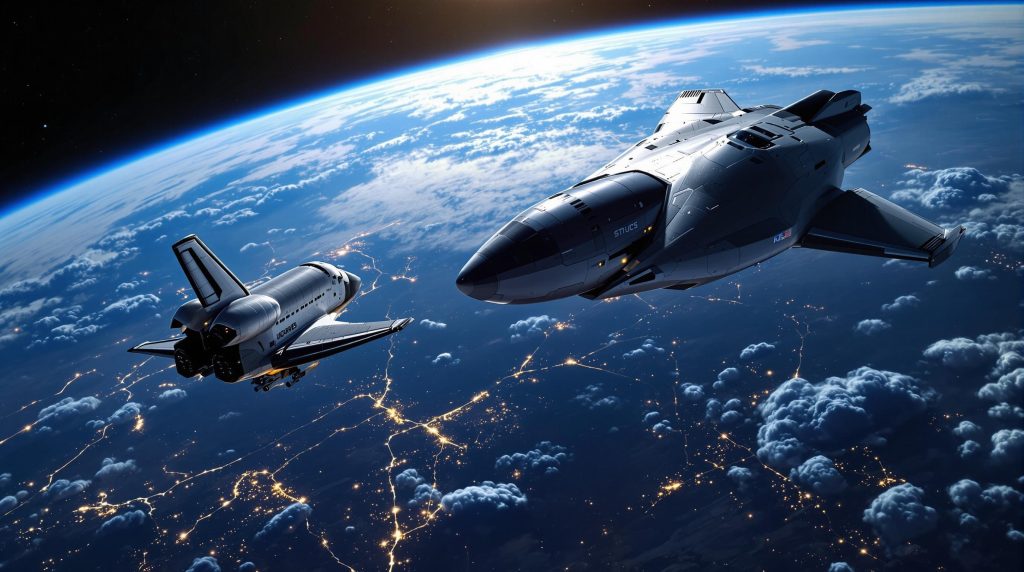
5. Which One Represents the Future of Space Travel?
While the Space Shuttle was a historic and groundbreaking spacecraft, Starship is poised to take space exploration to an entirely new level.
Why Starship Is the Future
✅ Cost Efficiency: Lower launch costs will make space travel more accessible.
✅ Interplanetary Travel: Starship is designed to colonize Mars and return humans to the Moon.
✅ Scalability: Unlike the Shuttle, which had limited production, Starship can be mass-produced.
✅ Commercial & Scientific Applications: Starship will serve NASA, private companies, and space tourism.
What the Shuttle Taught Us
🚀 The Shuttle program pioneered reusability, laying the foundation for spacecraft like Starship.
🚀 It proved long-term human spaceflight viability, leading to ISS development.
🚀 It inspired a new generation of engineers and astronauts to push space travel further.
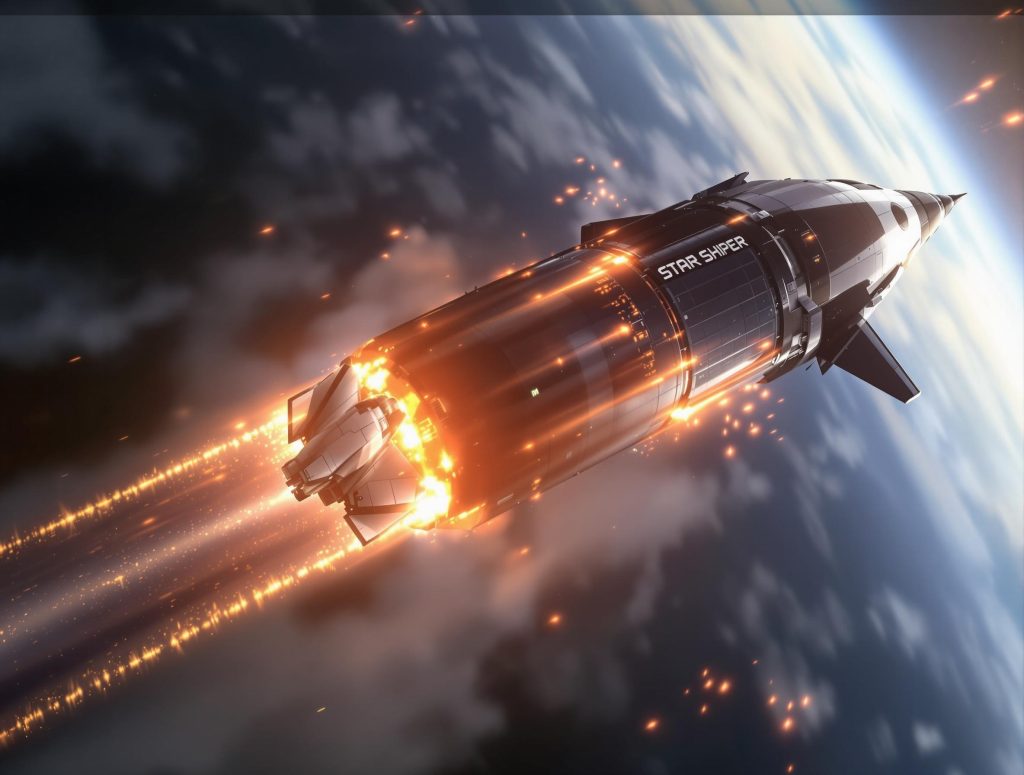
6. Conclusion: Starship Takes the Lead
The Space Shuttle was a crucial step in space exploration, but Starship represents the future. With full reusability, lower costs, and deep-space capability, it has the potential to transform how humans access and explore the universe.
If SpaceX succeeds in making Starship operational, it will open the door to Mars colonization, space tourism, and a new era of human spaceflight. The Space Shuttle walked so Starship could run—or rather, fly to Mars.
7. References of Space Shuttle vs Starship
NASA – Space Shuttle Program Overview
https://www.nasa.gov/mission_pages/shuttle/main/index.html
NASA’s official page on the Space Shuttle program, detailing its history, missions, and achievements.
SpaceX – Starship Development & Mission Goals
https://www.spacex.com/vehicles/starship
SpaceX’s official page on Starship, outlining its capabilities, progress, and long-term vision.
Federal Aviation Administration (FAA) – SpaceX Starship Launch Approvals
https://www.faa.gov/space/launches/
FAA’s regulatory information on Starship launches, including safety assessments and environmental impact.
Final Thoughts
The battle between Starship vs. Space Shuttle isn’t just about which spacecraft is better—it’s about how space travel is evolving. The Shuttle was an engineering marvel that enabled decades of human spaceflight, but Starship is the next leap toward interplanetary civilization.
Are we ready for a future where space travel is as routine as air travel? With Starship, that vision is closer than ever.
Let me know if you’d like any edits or more details! 🚀

